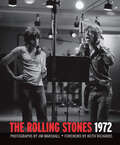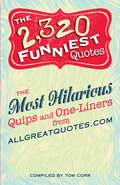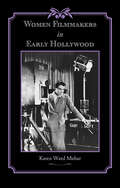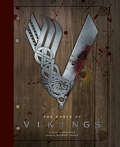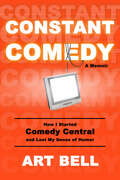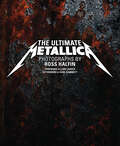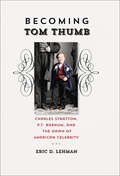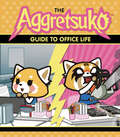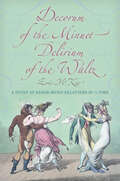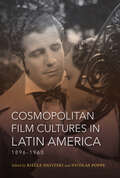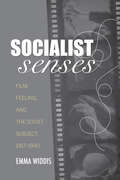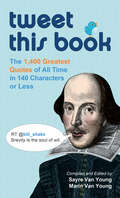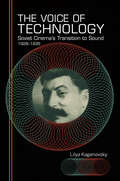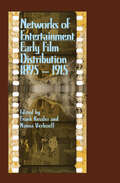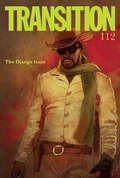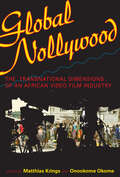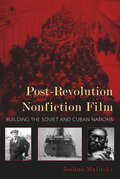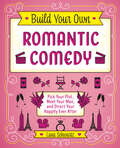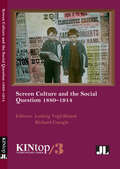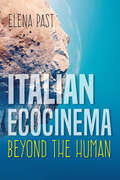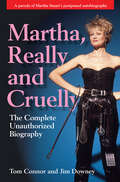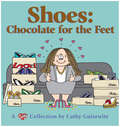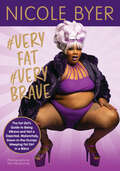- Table View
- List View
The Rolling Stones 1972
by Jim MarshallA pictorial chronicle of the Stones’ classic summer concert tour from the Life magazine photographer who followed them—with a foreword by Keith Richards.In 1972, the Rolling Stones marked their first decade as a band with the release of Exile on Main St. and a summer concert tour of America that set new standards for magnificence in live performance. Covering the tour for Life magazine, photographer Jim Marshall captured indelible moments of the Stones in their glory onstage, as well as the camaraderie behind the scenes. Featuring a foreword by Keith Richards, this volume presents Marshall’s shots alongside dozens of never-before-seen frames. Stones fans will revel in this unprecedented look at one of the biggest rock bands of all time from the photographer who captured them best.“The stunning images in this collection show the Stones in all their strung-out Exile on Main Street-era splendor—recording in Los Angeles, chilling backstage and strutting across some very lucky concert stages.” —Rolling Stone
The 2,320 Funniest Quotes: The Most Hilarious Quips and One-Liners from allgreatquotes.com
by Tom CorrPresenting the best of the best from AllGreatQuotes.com, this uproarious volume features gems on every topic, from sex and money to spouses and politics.From the witty quips of Mark Twain to the unintentionally hilarious gaffs of today’s celebrities, this collection of snappy quotes puts readers in hysterics. This uproarious volume has clever gems on every topic imaginable. It ranges from Oscar Wilde’s devious perspective on people (“Always forgive your enemies. Nothing annoys them so much.”) to Socrates’ ironic advice on marriage (“By all means marry; if you get a good wife, you’ll be happy; if you get a bad one, you’ll become a philosopher.”) to Julia Roberts’ view on keeping it real (“Your face tells a story—and it shouldn’t be a story about your drive to the doctor’s office.”). The 2,320 FunniestQuotes is perfect for readers who want a cocktail party wisecrack, Facebook wall post, or witty retort, or who are just looking for a reason to smile. Laugh until you cry with such words of wisdom as . . . God gave man a penis and a brain, but not enough blood to use both at the same time. —Robin WilliamsMoney can’t buy you happiness, but it does bring you a more pleasant form of misery. —Spike MilliganSome cause happiness wherever they go; others whenever they go. —Oscar WildeThe answers to life’s problems aren’t at the bottom of a bottle, they’re on TV! —Homer SimpsonWhen I eventually met Mr. Right, I had no idea that his first name was “Always.” —Rita RudnerHappiness is having a large, loving, caring, close-knit family in another city. —George Burns
Women Filmmakers in Early Hollywood (Studies in Industry and Society)
by Karen Ward MaharA study of how and why women in early twentieth-century Hollywood went from having plenty of filmmaking opportunities to very few.Women Filmmakers in Early Hollywood explores when, how, and why women were accepted as filmmakers in the 1910s and why, by the 1920s, those opportunities had disappeared. In looking at the early film industry as an industry—a place of work—Mahar not only unravels the mystery of the disappearing female filmmaker but untangles the complicated relationship among gender, work culture, and business within modern industrial organizations. In the early 1910s, the film industry followed a theatrical model, fostering an egalitarian work culture in which everyone—male and female—helped behind the scenes in a variety of jobs. In this culture women thrived in powerful, creative roles, especially as writers, directors, and producers. By the end of that decade, however, mushrooming star salaries and skyrocketing movie budgets prompted the creation of the studio system. As the movie industry remade itself in the image of a modern American business, the masculinization of filmmaking took root. Mahar&’s study integrates feminist methodologies of examining the gendering of work with thorough historical scholarship of American industry and business culture. Tracing the transformation of the film industry into a legitimate &“big business&” of the 1920s, and explaining the fate of the female filmmaker during the silent era, Mahar demonstrates how industrial growth and change can unexpectedly open—and close—opportunities for women.&“With meticulous scholarship and fluid writing, Mahar tells the story of this golden era of female filmmaking . . . Women Filmmakers in Early Hollywood is not to be missed.&” —Samantha Barbas, Women&’s Review of Books&“Mahar views the business of making movies from the inside-out, focusing on questions about changing industrial models and work conventions. At her best, she shows how the industry&’s shifting business history impacted women&’s opportunities, recasting current understanding about the American film industry's development.&” —Hilary Hallett, Reviews in American History&“A scrupulously researched and argued analysis of how and why women made great professional and artistic gains in the U.S. film industry from 1906 to the mid-1920s and why they lost most of that ground until the late twentieth century.&” —Kathleen Feeley, Journal of American History&“Women Filmmakers in Early Hollywood offers convincing evidence of how economic forces shaped women&’s access to film production and presents a complex and engaging story of the women who took advantage of those opportunities.&” —Pennee Bender, Business History Review
The World of Vikings
by Justin PollardThe official companion book to the first three seasons of the hit History Channel show inspired by a legendary Viking warrior.MGM’s hit show Vikings on the History Channel has drawn millions of viewers into the fascinating and bloody world of legendary Norse hero Ragnar Lothbrok, who led Viking warriors to the British Isles and France. Covering the first three seasons of the series, this official companion book delves into the real history as well as the behind-the-scenes stories. Viking historian Justin Pollard explains shipbuilding and navigation, Norse culture and religion, and the first encounters between Viking warriors and the kings of England and France. Interviews with cast and crew reveal the process of dramatizing this gripping story, from reviving the Old Norse language to choreographing battle scenes and building ancient temples for human sacrifice. This ebook is a must for fans of the show and history buffs alike.VIKINGS © 2015 TM Prods Ltd/T5 Vikings Prods Inc. VIKINGS™ TM Prods Ltd.Praise for The World of Vikings“A gorgeous companion book to the hit series . . . The World of Vikings is an excellent piece for the avid Vikings fan. I highly recommend it.” —Geeks of Doom“This is a whole new way of learning about Vikings. This book is full of the legends and the lifestyle, with pictures to boot. It is a great read for any proud Scandinavian.” —Grand Forks Herald
Constant Comedy: How I Started Comedy Central and Lost My Sense of Humor
by Art BellThis insider’s memoir about the origins of Comedy Central is “a very, very funny book about an amazing piece of comedy history” (Jerry Zucker, cowriter and director of Airplane!).Finalist, 2020 Best Book Awards sponsored by American Book FestIn 1988, a young, mid-level employee named Art Bell pitched a novel concept—a television channel focused 100% on just one thing: comedy—to the chairman of HBO. The station that would soon become Comedy Central, with celebrated programs like South Park, Chapelle’s Show, The Daily Show, and The Colbert Report, was born.Constant Comedy takes you behind the scenes into the comedy startup on its way to becoming one of the most successful and creative purveyors of popular culture in the United States. From disastrous pitch meetings with comedians to the discovery of talents like Bill Maher and Jon Stewart, this intimate biography peers behind the curtain and reveals what it’s really like to work, struggle, and ultimately succeed at the cutting edge of show business. “The funniest behind-the-scenes memoir I’ve ever read, full of crazy characters, plot twists, and suspense.” —Dan Lyons, New York Times-bestselling author of Disrupted
The Ultimate Metallica: 0
by Kirk Hammett Ross HalfinOver 250 photos of the band by their top photographer—plus reminiscences by managers, music writers, and members of Metallica themselves.Legendary music photographer Ross Halfin has documented Metallica from their beginnings as a scrappy, furious garage band to their current status as the heaviest and most popular metal band in the world. The Ultimate Metallica collects the best of Halfin’s amazing images, taken over the years with access granted exclusively to him as the band’s main lensman. His candid photographs—taken on stage, backstage, on and off tour—are supplemented by text from many people close to the band, including managers and music writers, plus some colorful personal observations from Halfin himself.“Ross Halfin’s mark is often imprinted when I access the Metallica memory bank, located deep in the bowels of my thick Danish skull.” —Lars Ulrich
Becoming Tom Thumb: Charles Stratton, P.T. Barnum, and the Dawn of American Celebrity (The Driftless Connecticut Series)
by Eric D. LehmanAn “evocative and entertaining” biography of the nineteenth century circus performer who became a global phenomenon (Neil Harris, author of Humbug).When P. T. Barnum met twenty-five-inch-tall Charles Stratton at a Bridgeport, Connecticut hotel in 1843, one of the most important partnerships in entertainment history was born. With Barnum’s promotional skills and the miniature Stratton’s comedic talents, they charmed a Who’s Who of the nineteenth century, from Queen Victoria to Charles Dickens to Abraham Lincoln. Adored worldwide as “General Tom Thumb,” Stratton played to sold-out shows for almost forty years. From his days as a precocious child star to his tragic early death, Becoming Tom Thumb tells the full story of this iconic figure for the first time. It details his triumphs on the New York stage, his epic celebrity wedding, and his around-the-world tour, drawing on newly available primary sources and interviews. From the mansions of Paris to the deserts of Australia, Stratton’s unique brand of Yankee comedy not only earned him the accolades of millions of fans, it helped move little people out of the side show and into the limelight.
Name That Movie: 100 Illustrated Movie Puzzles
by Paul RogersCan you identify the film from the images? A fun and challenging visual quiz for movie buffs! The house on the hill in Psycho. The Big Kahuna burger in Pulp Fiction. The giant dinosaur sculptures in Pee-Wee’s Big Adventure. In Name That Movie, celebrated illustrator Paul Rogers tests our visual knowledge of the world of cinema, highlighting both obscure and instantly recognizable references to 100 classic films, from the golden age of cinema to the blockbusters of today. The rules of the game are simple: each film gets six line drawings, delivered in sequence, and—here’s the clincher—no movie stars. Complete with answer key and index, this entertaining book will delight cinephiles who will see their favorite films in a whole new light.
The Aggretsuko Guide to Office Life: (sanrio Book, Red Panda Comic Character, Kawaii Gift, Quirky Humor For Animal Lovers)
by SanrioA colorful guide to office life as written by the beleaguered twenty-five-year-old red panda and star of the hit Netflix show.Aggretsuko may seem like just a cute, endearing, little red panda, but under the surface, she’s also a fed up office worker who’s tired of being pushed around and ready to snap. In this helpful handbook, she offers tips on how to deal with annual holiday parties, avoid colleagues after hours, circumvent oversharing coworkers, and most importantly—how to RAGE (preferably in heavy-metal karaoke sessions). Featuring art from the popular videos and Sanrio products combined with sidebars and prescriptive tips, this book is a must-have for anyone who needs help staying sane from nine to five.
Decorum of the Minuet, Delirium of the Waltz: A Study of Dance-Music Relations in 3/4 Time
by Eric McKeeAn investigation of dance-music relations in two out of the three most influential social dances of the eighteenth and nineteenth centuries.Much music was written for the two most important dances of the eighteenth and nineteenth centuries, the minuet and the waltz. In Decorum of the Minuet, Delirium of the Waltz, Eric McKee argues that to better understand the musical structures and expressive meanings of this dance music, one must be aware of the social contexts and bodily rhythms of the social dances upon which it is based. McKee approaches dance music as a component of a multimedia art form that involves the interaction of physical motion, music, architecture, and dress. Moreover, the activity of attending a ball involves a dynamic network of modalities—sight, sound, bodily awareness, touch, and smell, which can be experienced from the perspectives of a dancer, a spectator, or a musician. McKee considers dance music within a larger system of signifiers and points-of-view that opens new avenues of interpretation.“McKee’s book . . . fulfils its aim: that of presenting dance-music relations in two out of three of the most popular ballroom dances in several centuries. To my knowledge, there is no other English publication on such intersection of topics—thus it deserves a place in the libraries of music and dance departments.” —Gediminas Karoblis, Dance Research“I think this is an important book for musicians and dance academics alike, since McKee proposes that to understand the musical structures of the minuet and waltz, “it is helpful to be aware of the bodily rhythms of the dance upon which they are based and the social contexts in which they were performed”. . . . McKee’s holistic approach illuminates the total experiences of all the participants. . . . highly informative on the importance of dancing at every level of society, and its varying social functions, during the eighteenth and nineteenth centuries.” —Dance Europe“McKee’s overall orientation is laudable, since functional dance music has largely been ignored by music analysts, and stylized dance music has been treated as if it had minimal connection to the practice of dancing. . . . Despite the amount of close music analysis, McKee’s writing is accessible to a wide range of readers. . . . One hopes that McKee has plans for a future book to follow the mid-century delirium of the waltz to its twentieth-century demise.” —Nineteenth-Century Music Review
Cosmopolitan Film Cultures in Latin America, 1896–1960 (New Directions in National Cinemas)
by Rielle Navitski and Nicolas PoppeCosmopolitan Film Cultures in Latin America examines how cinema forged cultural connections between Latin American publics and film-exporting nations in the first half of the twentieth century. Predating today's transnational media industries by several decades, these connections were defined by active economic and cultural exchanges, as well as longstanding inequalities in political power and cultural capital. The essays explore the arrival and expansion of cinema throughout the region, from the first screenings of the Lumière Cinématographe in 1896 to the emergence of new forms of cinephilia and cult spectatorship in the 1940s and beyond. Examining these transnational exchanges through the lens of the cosmopolitan, which emphasizes the ethical and political dimensions of cultural consumption, illuminates the role played by moving images in negotiating between the local, national, and global, and between the popular and the elite in twentieth-century Latin America. In addition, primary historical documents provide vivid accounts of Latin American film critics, movie audiences, and film industry workers' experiences with moving images produced elsewhere, encounters that were deeply rooted in the local context, yet also opened out onto global horizons.
Socialist Senses: Film, Feeling, and the Soviet Subject, 1917–1940
by Emma Widdis&“Widdis&’s rich and fascinating book has opened a new perspective from which to think about the Soviet cinema.&” —Kritika This major reimagining of the history of Soviet film and its cultural impact explores the fundamental transformations in how film, through the senses, remade the Soviet self in the 1920s and 1930s. Following the Russian Revolution, there was a shared ambition for a &‘sensory revolution&’ to accompany political and social change: Soviet men and women were to be reborn into a revitalized relationship with the material world. Cinema was seen as a privileged site for the creation of this sensory revolution: Film could both discover the world anew, and model a way of inhabiting it. Drawing upon an extraordinary array of films, noted scholar Emma Widdis shows how Soviet cinema, as it evolved from the revolutionary avant-garde to Socialist Realism, gradually shifted its materialist agenda from emphasizing the external senses to instilling the appropriate internal senses (consciousness, emotions) in the new Soviet subject.
Tweet This Book: The 1,400 Greatest Quotes of All Time in 140 Characters or Less
by Compiled;edited by Sayre Van Young;Marin Van YoungTweetable-length quotes that are clever, cool, smart, touching, wise, funny, and more from the author of The Unofficial Harry Potter Vocabulary Builder.Brevity may be the soul of wit, but 280 characters is the absolute limit on Twitter! Luckily, Tweet This Book allows you to spice up their microblog with the greatest quotes of all time. Each one is not only brief—it is officially tweetable. The quick, punchy quotes in this wonderfully diverse collection come from all circles and include literary greats; politicians like Abe Lincoln, Winston Churchill, and Barack Obama; and sports figures, musicians, and celebrities like Yogi Berra, Tupac Shakur, and Hunter S. Thompson. With an easy-to-use, A-to-Z organization by topic, you can quickly find the perfect quote for anything you want to tweet about.“You’d be surprised how much it costs to look this cheap.” —Dolly Parton“Why go out for hamburger when you have steak at home?” —Paul Newman“The trouble with the rat race is that even if you win, you’re still a rat.” —Lily Tomlin“Giving birth is like taking your lower lip and forcing it over your head.” —Carol Burnett“The only time to eat diet food is while you’re waiting for the steak to cook.” —Julia Child“Some cause happiness wherever they go; others whenever they go.” —Oscar Wilde“Life is too short to blend in.” —Paris Hilton“Whatever you are, be a good one.” —Abraham Lincoln“Women need a reason to have sex. Men just need a place.” —Billy Crystal“Fasten your seat belts. It’s going to be a bumpy night.” —Bette Davis (in All About Eve)
The Voice of Technology: Soviet Cinema's Transition to Sound, 1928–1935
by Lilya KaganovskyA deeply researched exploration of the technology, aesthetics, and politics of Soviet film during the transition from silent to sound. As cinema industries around the globe adjusted to the introduction of synch-sound technology, the Soviet Union was also shifting culturally, politically, and ideologically from the heterogeneous film industry of the 1920s to the centralized industry of the 1930s, and from the avant-garde to Socialist Realism. In The Voice of Technology: Soviet Cinema&’s Transition to Sound, 1928–1935, Lilya Kaganovsky explores the history, practice, technology, ideology, aesthetics, and politics of the transition to sound within the context of larger issues in Soviet media history. Industrialization and centralization of the cinema industry greatly altered the way movies in the Soviet Union were made, while the introduction of sound radically altered the way these movies were received. Kaganovsky argues that the coming of sound changed the Soviet cinema industry by making audible, for the first time, the voice of State power, directly addressing the Soviet viewer. By exploring numerous examples of films from this transitional period, Kaganovsky demonstrates the importance of the new technology of sound in producing and imposing the &“Soviet Voice.&” &“Kaganovsky&’s research is impeccable. Not only does she reference virtually all English-language writing on her subject, she also has combed the archives, unearthing personal stories, government records, filmmakers&’ notes, press reviews from the period, and other previously untranslated documents.&” —CineMontage
Networks of Entertainment: Early Film Distribution, 1895–1915 (Early Cinema in Review)
by Frank Kessler and Nanna VerhoeffEssays by prominent scholars examining film distribution in the early years of cinema.This collection of essays explores the complex issue of film distribution from the invention of cinema into the 1910s. From regional distribution networks to international marketing strategies, from the analysis of distribution catalogs to case studies on individual distributors, these essays written by well-known specialists in the field discuss the intriguing question of how films came to meet their audiences.Contributors include Richard Abel, Marta Braun, Joseph Garncarz, André Gaudreault, François Jost, Charlie Keil, Martin Loiperdinger, Viva Paci, Wanda Strauven, Gregory Waller, and many more.
Transition 112: The Django Issue (Transition #112)
by IU Press JournalsIssue #112 looks at violence and its relation to the history of slavery, featuring pieces on the films Django Unchained and Lincoln.Published three times per year by Indiana University Press for the Hutchins Center at Harvard University, Transition is a unique forum for the freshest, most compelling ideas from and about the black world. Since its founding in Uganda in 1961, the magazine has kept apace of the rapid transformation of the African Diaspora and has remained a leading forum of intellectual debate.In issue 112, the editors of Transition look at violence, particularly as it relates to the history of slavery, which raises the question of representation. Textbooks and television both grapple with the same fundamental questions: to whom do the stories of slaves belong? How should these stories be told? In this issue, Daniel Itzkovitz talks with Tony Kushner about the controversy that surrounded the making of Lincoln, a serious and sober film about the passage of the 13th Amendment. Django Unchained covers the same time period but uses a wildly different lens. The film is terrifying and topsy-turvy, and has ignited controversy that became a white-hot conflagration. Henry Louis Gates, Jr. speaks with Quentin Tarantino about the making of his film, and a host of scholars and critics, including Walter Johnson, Glenda Carpio, and Terri Francis, set the issue ablaze with provocative and searing commentary that speaks to the controversial film and its potent afterlife.
Global Nollywood: The Transnational Dimensions of an African Video Film Industry (African Expressive Cultures)
by Matthias Krings and Onookome Okome“Reveals in fascinating detail the wild popularity, controversies, and complaints provoked by this film form . . . shap[ing] the media landscape of Africa.” —Brian Larkin, Barnard CollegeGlobal Nollywood considers this first truly African cinema beyond its Nigerian origins. In fifteen lively essays, this volume traces the engagement of the Nigerian video film industry with the African continent and the rest of the world. Topics such as Nollywood as a theoretical construct, the development of a new, critical film language, and Nollywood’s transformation outside of Nigeria reveal the broader implications of this film form as it travels and develops. Highlighting controversies surrounding commodification, globalization, and the development of the film industry on a wider scale, Global Nollywood gives sustained attention to Nollywood as a uniquely African cultural production.“Offers original material with respect to the transnational presence of Nollywood.” ?Moradewun Adejunmobi, University of California, Davis“Unveils a fascinating variety of the ways in which Nollywood cinema is viewed and interpreted.” ?Research in African Literatures“Delightfully entertaining yet appropriately erudite. . . . A welcome addition to the fields of film, media, African, and cultural studies.” —Cinema Journal“Highly recommended.” ?Choice“[T]he cumulative effect of [these] studies is to provide invaluable information for those wishing to keep up with where African cinema is today.” ?Journal of African History“Global Nollywood represents the most up-to-date research on Nollywood as a transnational cultural practice and is a must-read for scholars and students of African screen media.” —African Studies Review“Ground-breaking. . . . It proves that, in spite of appearing to be a niche market, Nollywood . . . can no longer be excluded from the canon of African cinema in the field of film studies.” ?African Affairs
Post-Revolution Nonfiction Film: Building the Soviet and Cuban Nations (New Directions in National Cinemas)
by Joshua MalitskyA study of how the state has used documentary films to create historical and political narratives in the Soviet Union and Cuba.In the charged atmosphere of post-revolution, artistic and political forces often join in the effort to reimagine a new national space for a liberated people. Joshua Malitsky examines nonfiction film and nation building to better understand documentary film as a tool used by the state to create powerful historical and political narratives. Drawing on newsreels and documentaries produced in the aftermath of the Russian revolution of 1917 and the Cuban revolution of 1959, Malitsky demonstrates the ability of nonfiction film to help shape the new citizen and unify, edify, and modernize society as a whole. Post-Revolution Nonfiction Film not only presents a critical historical view of the politics, rhetoric, and aesthetics shaping post-revolution Soviet and Cuban culture but also provides a framework for understanding the larger political and cultural implications of documentary and nonfiction film.“A splendid and highly readable book which imbues a suggestive comparison of cinema in the early years of the Soviet and Cuban revolutions with fresh insights.” —Michael Chanan, author of Cuban Cinema“Joshua Malitsky here mines a rich seam. By closely comparing Vertov and Alvarez he uncovers “post-revolutionary nonfiction film” as a discernible entity with commonalities shared across time and cultures. The extensive—indeed vast—archive of newsreels from both filmmakers is well worth the thorough attention he gives it, suggesting a context for their better-known documentaries. And his situating of Esfir Shub’s compilations as not so much an alternative to Vertov but rather a wholesale replacement approach to agitprop is also compelling. All in all, Malitsky offers a crucial corrective to much received thinking on 20th century radical film.” —Brian Winston, University of Lincoln, UK
Build Your Own Romantic Comedy: Pick Your Plot, Meet Your Man, and Direct Your Happily Ever After
by Lana Schwartz“A rollicking, meta, Choose Your Own Adventure novel for adults whose notions of romance are skewed and cracked from a lifelong diet of Meg Ryan movies.” —VultureGet ready to relax with your favorite romantic comedy of all time—the one you create! Instead of turning on the latest cheesy rom-com for a simple, mood-boosting love story, put yourself in the director’s chair with Build Your Own Romantic Comedy.First, open the book and pick your heroine. Will she be a high-powered business lady with no time for love? Or a quirky bakery owner? Just make your choice and read how the magic unfolds. When it’s time to meet your man, do you prefer a hunky prince, a hunky executive, or a hunky nemesis? Each choice will take you down a totally different path that all somehow end up making a charmingly predictable romance.Choice by hilarious choice, you’ll pick from classic rom-com elements like:Sassy best friendsRomantic date montagesA makeover, obviouslyDramatic but easily solved misunderstandingsMake your way closer and closer to the big payoff—the picture-perfect, most romantic final kiss ever.And when you’ve savored that last bit of fun, romantic goodness, don’t be glum. Turn back to page one and start a new love story. With over 100 possible stories, the happily-ever-afters never have to stop.
Screen Culture and the Social Question, 1880–1914 (KINtop #3)
by Ludwig Vogl-Bienek and Richard CrangleEssays exploring how reformers and charities used the “magic lantern” to raise public awareness of poverty.Public performances using the magic or optical lantern became a prominent part of the social fabric of the late nineteenth century. Drawing on a rich variety of primary sources, Screen Culture and the Social Question, 1880-1914 investigates how the magic lantern and cinematograph, used at public lectures, church services, and electoral campaigns, became agents of social change.The essays examine how social reformers and charitable organizations used the “art of projection” to raise public awareness of the living conditions of the poor and the destitute, as they argued for reform and encouraged audiences to work to better their lot and that of others.
Italian Ecocinema: Beyond the Human (New Directions in National Cinemas)
by Elena PastEcocriticism and film studies unite in this examination of five Italian films and the environmental questions they raise.Entangled in the hybrid fields of ecomedia studies and material ecocriticism, Elena Past examines five Italian films shot on location and ponders the complex relationships that the production crews developed with the filming locations and the nonhuman cast members. She uses these films—Red Desert (1964), The Winds Blows Round (2005), Gomorrah (2008), Le quattro volte (2010), and Return to the Aeolian Islands (2010)—as case studies to explore pressing environmental questions such as cinema’s dependence on hydrocarbons, the toxic waste crisis in the region of Campania, and our reliance on the nonhuman world. Dynamic and unexpected actors emerge as the subjects of each chapter: playful goats, erupting volcanoes, airborne dust particles, fluid petroleum, and even the sound of silence. Based on interviews with crew members and close readings of the films themselves, Italian Ecocinema Beyond the Human theorizes how filmmaking practice—from sound recording to location scouting to managing a production—helps uncover cinema’s ecological footprint and its potential to open new perspectives on the nonhuman world.“[Past] uniquely and innovatively combines film studies and material ecocriticism with a focus on Italy. Such weaving of tales brings the films to life and reads them as ecological documents and Italian stories.” —Heather I. Sullivan, author of The Intercontextuality of Self and Nature in Ludwig Tieck’s Early Works“A timely and incisive study that interrogates a new, though growing, trend in film criticism and makes an important and rich contribution to Italian film studies, Italian cultural studies, and ecocriticism.” —Bernadette Luciano, author (with Susanna Scarparo) of Reframing Italy: New Trends in Italian Women’s Filmmaking“Part memoir, part close analysis of the films themselves, and illustrated with numerous excellent frame grabs, Past’s book casts a dreamlike spell as it contemplates the past, present, and future of the cinema and moves smoothly between environmental issues and aesthetic and practical concerns.” —Choice
Spanish Cinema Against Itself: Cosmopolitanism, Experimentation, Militancy (New Directions in National Cinemas)
by Steven Marsh“An extraordinary philosophical exploration of the political potential and continued political commitment of cinema today . . . An essential read.” —Patricia Keller, Associate Professor of Spanish and Comparative Literature, Cornell UniversitySpanish Cinema Against Itself maps the evolution of Spanish surrealist and politically committed cinematic traditions from their origins in the 1930s—with the work of Luis Buñuel and Salvador Dalí, experimentalist José Val de Omar, and militant documentary filmmaker Carlos Velo—through to the contemporary period. Framed by film theory this book traces the works of understudied and non-canonical Spanish filmmakers, producers, and film collectives to open up alternate, more cosmopolitan and philosophical spaces for film discussion. In an age of the post-national and the postcinematic, Steven Marsh’s work challenges conventional historiographical discourse, the concept of “national cinema,” and questions of form in cinematic practice.“In this exhilarating counter-history of experimental filmmaking in Spain, Steven Marsh takes up the politics of form, the trouble with film history, and the theoretical potential of haunting, discontinuity, and absence . . . Spanish Cinema Against Itself is an important intervention in Spanish film studies and, indeed, in the scholarship on world cinema.” —Rosalind Galt, Professor of Film Studies, King’s College London
Martha, Really and Cruelly: The Complete Unauthorized Biography
by Tom Connor Jim DowneyFrom the wise guys behind Is Martha Stewart Living? comes a hilarious parody of the lifestyle maven&’s autobiography. Long before Martha Stewart's insider trading scandal, Tom Connor and Jim Downey had been spoofing her announced-then-postponed autobiography, Martha, Really and Truly. Now, in Martha, Really and Cruelly, the best-selling humor duo delivers their own version of events leading up to her sensational downfall. Written in "Martha's" voice, this faux autobiography reveals early incidents of unethical playing-house tactics, questionable Kool-Aid stand practices, highly suspect home ec grades, and devious dating strategies. And that's before she's out of her teens! If anyone can take uncannily accurate aim at the Dominatrix of Domesticity, it's Connor and Downey. Their breakout best-seller Is Martha Stuart Living? was followed by Martha Stuart's Better Than You at Entertaining and Martha Stuart's Excruciatingly Perfect Weddings.
Shoes: Chocolate for the Feet (Cathy Ser. #21)
by Cathy GuisewiteAmerica’s favorite comic strip heroine shares her passion for footwear in this hilarious collection.Like best friends who’ve been together year after year, through thick and thin, Cathy and her adoring public have created a solid and stable relationship. Faithful readers count on their cartoon heroine to tell it like it is, whether the subject is relationships, shopping, or parental responsibilities.In Shoes: Chocolate for the Feet, women immediately comprehend this connection between two of Cathy’s downfalls-food and shopping. Cathy continues to battle the bulge, constantly losing the tug-of-war between her thin clothes and a well-stocked refrigerator. Millions of women have hilariously identified with Cathy's struggles with the four basic guilt groups: food, love, mother, and career.
#VERYFAT #VERYBRAVE: The Fat Girl's Guide to Being #Brave and Not a Dejected, Melancholy, Down-in-the-Dumps Weeping Fat Girl in a Bikini
by Nicole ByerA hilarious and inspiring guide to being a #brave, bikini-wearing badass, from the actress, comedian, and podcaster extraordinaire.If you’ve ever seen a fat person post a bikini shot on social media, you already know that they are #verybrave, because apparently existing in a fat body in public is #brave. I, Nicole Byer, wrote this book to 1. share my impressive bikini collection and my hot body with the world and 2. help other people feel #brave by embracing their body as it is. In this book, I share my journey to becoming #brave, give you my hot tips and tricks—on how to find the perfect bikini, how to find your own #bravery, and how to handle haters—and serve you over 100 bikini looks.Praise for #VERYFAT #VERYBRAVEOne of Cosmopolitan’s “12 Books You’ll Be Desperate to Read This Summer”One of Good House Keeping’s “Best Beach Reads to Add to Your Summer Reading List”Book Riot’s #1 Body Positivity Book to Read“Basically a bikini look book showing off [Byer’s] beautiful figure in a hundred different colorful swimmies. She also shares her body-acceptance journey and gives tips on how others can find their own bravery, handle haters, and embrace their bodies.” —Cosmopolitan“This book is a hilariously empowering take on self-love.” —Parade“And while Byer, the comedian who hosts Netflix’s Nailed It!, has filled the book with captions that are funny enough to prompt a reader to actually chuckle aloud, inspiring others is at the book’s core.” —USA Today
